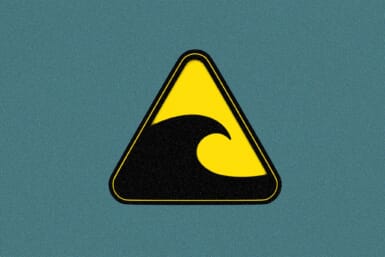Choshi City in Chiba Prefecture is grappling with Japan’s largest avian influenza outbreak since 2020. The highly pathogenic H5 strain was confirmed on January 11, following the sudden deaths of over 200 chickens and subsequent genetic testing. In response, authorities have launched a massive culling operation to dispose of approximately 410,000 chickens over five days, supported by an unexpected ally: the Self-Defense Forces (SDF).
Yes, Japan’s specialized military unit, typically reserved for national security crises, has been tasked with “neutralizing” chickens. At the request of Chiba’s governor, 180 SDF personnel are working in shifts around the clock, with responsibilities including the culling of 120,000 chickens in the affected and neighboring poultry houses.
To contain the spread, the prefectural government has also banned the shipment of birds and eggs within a 10-kilometer radius, affecting more than 5 million chickens across 55 farms. This outbreak represents Chiba’s largest culling operation in years, highlighting the prefecture’s vulnerability as Japan’s leading producer of chicken eggs. But, is mass culling really the only way to deal with these outbreaks?
Balancing Biosecurity and Ethics
Deploying the Self-Defense Forces to combat a poultry farm crisis may seem ludicrous, but it reflects the severity of the situation and the agricultural sector’s reliance on extreme measures during disease outbreaks. While culling is intended to halt the spread of infection and mitigate economic fallout, it exposes deeper structural weaknesses in disease management strategies. Advances in biosecurity, vaccination programs and early detection are frequently proposed alternatives, yet, inconsistencies in terms of application leaves the industry trapped in a reactive cycle of outbreaks and mass culling.
Notably, some animal welfare advocates argue that this approach may not always be necessary. When an outbreak of H5N1 struck Harvest Home Animal Sanctuary in California in 2023, state officials opted not to mandate culling, citing exemptions for non-food-producing farms. Instead, the sanctuary implemented strict quarantine measures for 120 days.
Although the virus ultimately claimed 26 of the 160 birds, the rest — including visibly ill ones — recovered. Christine Morrissey, the sanctuary’s director, believes this example demonstrates the potential for alternative methods. “Depopulation is horrifying and doesn’t solve the underlying problem,” she said in an interview with The New York Times, urging more research into less destructive responses to avian influenza.
A Symptom of Larger Vulnerabilities
The current outbreak reflects a broader global trend of avian influenza cases, driven by evolving virus strains and the intensification of poultry farming practices. While high-density farming systems are economically efficient, they significantly increase the risk of widespread infection.
This pattern of outbreaks highlights the importance of exploring more sustainable approaches to disease prevention within interconnected systems. The One Health paradigm views human, animal and environmental health as interconnected. Traditional strategies like culling prioritize immediate containment but often neglect long-term solutions that balance these interdependencies. Critics of mass culling argue that such measures fail to address structural vulnerabilities, such as the risks inherent in high-density farming and global poultry trade.
Advocates for reform highlight the importance of shifting from reactive containment to proactive measures, such as enhanced biosecurity, vaccination programs and sustainable farming practices. However, implementing these measures presents economic and logistical challenges, particularly in regions with complex production chains, often leaving culling as the default strategy.
In response to the outbreak in Chiba, the Ministry of Agriculture has convened an emergency meeting to discuss potential countermeasures, including improved biosecurity, faster genetic testing and enhanced surveillance. Yet, these efforts will need to address underlying systemic issues to mitigate future risks effectively.
The Cost of Control
The ongoing culling operation highlights the tension between vigilance and systemic cruelty. While essential to safeguarding public health and the agricultural ecosystem, the mass destruction of animal life forces an ethical reckoning.
As Chiba struggles to recover, the outbreak underscores the fragility of Japan’s agricultural sector and the urgent need for sustainable, humane practices. It also prompts critical questions regarding the moral costs of large-scale culling and the steps that are necessary to build resilience against future outbreaks.









